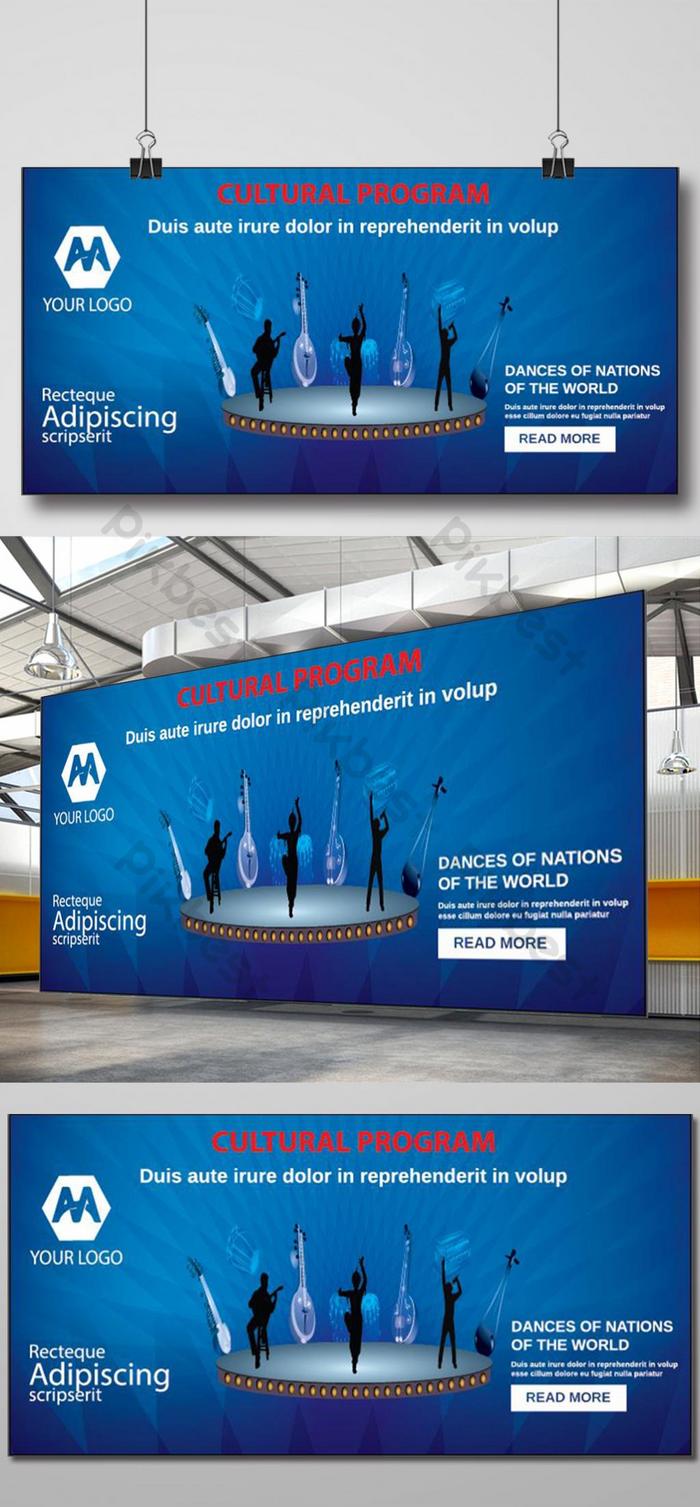In a world where the mundane oftentimes eclipses the remarkable, a cultural program invited guest banner serves as a conduit of excitement and anticipation. Envision stepping into a space adorned with vibrant colors and thoughtful designs, where art and identity converge. It is not merely a banner; it is a portal into a celebration of heritage, creativity, and community. This banner, as unassuming as it may appear, encapsulates a profound narrative that reverberates through the hearts of its audience.
The first striking aspect of a cultural program invited guest banner is its ability to condense multitudes of ideas and emotions into a single visual entity. Think of it as a literary sonnet—the few words chosen resonating like verses wrapped in melodious expression. Each element of the banner is meticulously crafted to represent the essence of the event, whether it’s a festival honoring ancestral traditions or an exhibition showcasing contemporary artistry. The hues selected pulsate with meaning; cerulean might evoke the vast sky of possibilities, while warm ochres recall the earth from which culture springs forth.
Moreover, the design itself serves a dual purpose: it attracts attention and cultivates curiosity. In this digital age, where attention spans dwindle to mere moments, an inviting banner must weave an intricate tapestry that draws the eye and ignites the imagination. It stands as a lighthouse, beckoning individuals from afar to revel in the forthcoming gathering. Fonts become fonts of invitation, curling and dancing as if they too yearn to be part of the event. Illustrations, vivid in color, cascade across the surface, creating an ambiance where cultural narratives come alive.
But the true unique appeal of such a banner lies in its symbolism, akin to an ancient sigil cast upon a modern canvas. It signifies inclusion and belonging, two pillars upon which successful cultural gatherings stand. As guests approach, they are welcomed not just by words, but by the emotive visual vocabulary that the banner presents. It transforms an ordinary space into a microcosm of community, where diversity flourishes and unified spirits celebrate. Those who encounter it feel an inexplicable pull to be part of something larger—a collective experience that transcends the individual.
In terms of practicality, these banners carry the weighty responsibility of conveying crucial information. Like a map guiding travelers through a forest of venues and schedules, it must communicate effectively without overwhelming the senses. A succinct invitation to the audience, the banner delineates not only the speakers or artists but also the essence of the experience awaiting them. This balances clarity with allure; it must enchant while ensuring that the core details are not relegated to mere whispers in the cacophony of design.
Furthermore, the interplay of light and shadow plays a vital role in enhancing a banner’s uniqueness. As day transforms into evening, the illumination of the banner casts ethereal glows that dance amid the gathering crowd. Herein lies a metaphor for culture itself—an interplay of traditions intertwined with modern interpretations. Just as light reveals the intricate details of craftsmanship, culture illuminates the diverse narratives etched within each individual present. The banner stands, not only as a herald but as a metaphorical tapestry, weaving together the rich threads that make up the societal fabric.
To magnify the impact, consider the surrounding environment where the banner will be displayed. The backdrop—a venue with its unique acoustics and architecture—enhances the banner’s storytelling capabilities. A historic hall, with its echoing whispers of the past, frames the invited guest banner perfectly; it becomes the vessel of continuity in a constant flux of modern society. In contrast, displaying it within a bustling artistic district might inspire the banner to evolve further—its colors responding to collective creativity, turning it into part of an ever-changing dialogue on cultural expression.
As we consider the fabric of society itself, one cannot overlook the environmental implications of production. Choosing sustainable materials for the banner’s creation becomes emblematic of the cultural program’s ethos. A banner crafted from recycled or eco-friendly resources sends a powerful message. It signifies a commitment not only to cultural preservation but also to the stewardship of the Earth. By embodying these values, the banner can transcend its physical characteristics, becoming a symbol of harmony, bridging the chasm between culture and ecology.
In conclusion, the cultural program invited guest banner is a vital element that beckons us to gather, celebrate, and appreciate the rich tapestry of cultural diversity. It stands as a testament to the importance of identity, the celebration of heritage, and the pursuit of collective experiences that unite rather than divide. In an age where we often find ourselves drifting apart, these banners might just be the harbingers that remind us of the profound joys found in shared experiences. They invite us to witness, engage, and rejoice in the intricate narratives woven throughout the multitudinous expressions of life. As we embrace this visual invitation, may we always remember the stories waiting to be shared beneath its vibrant folds.
